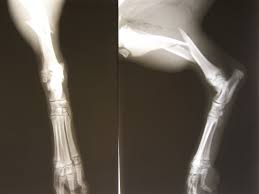- HOME
- PEMF Therapy for Dogs
PEMF Therapy for Dogs: Ease Pain and Improve Movement

Seeing your dog struggle with pain or stiffness is tough. Many owners now ask about PEMF therapy for dogs as a drug-free approach. As a non-invasive dog physical therapy alternative, PEMF may help manage your dog's arthritis pain or joint pain. This post explains how PEMF for dogs works, its potential benefits for dog mobility, and what the science and dog owners report. Find out if PEMF dog therapy might help your pet move easier.
🐾 Here's a quick rundown of the blog post:
What is PEMF?
PEMF stands for pulsed electromagnetic field therapy. It uses a combination of electric and magnetic fields, two forces we’re exposed to every day. PEMF stands for pulsed electromagnetic field therapy.
🐾 Electric fields surround any charged particle. In medicine, they are measured by tools like EKGs, which track electrical signals in the heart.
🐾 Magnetic fields come from sources like the Earth’s iron core. This magnetic field protects us from solar radiation.
When these forces combine, they form an electromagnetic field. It is one of nature’s basic forces and can be described by frequency in Hertz, waveform, and intensity. The Earth’s natural electromagnetic field pulses between 1 and 30 Hertz.

Static Magnets vs. PEMF Fields
We know magnets have been used for healing since Roman and Greek times.
🐾 Static magnets create a constant magnetic field.
🐾 PEMF therapy uses pulsed electromagnetic fields, which reach deeper into tissue than static magnets.
This deeper reach helps cells repair and regenerate more effectively.
Differences Between Therapeutic PEMF and Harmful Electromagnetic Fields (EMF)
There are different sources of EMF: low from appliances, intermediate from computer screens, and high from devices like mobile phones and microwaves.
🐾 Frequency affects how safe and effective these fields are.
High frequencies from many devices don’t match natural frequencies and can cause interference. Therapeutic PEMF devices work below 100 Hertz, which is closer to natural levels.
PEMF therapy is very different from everyday man-made electromagnetic fields [1].

The Science Behind PEMF Therapy
Body’s Cellular Electromagnetics
Cells in the body have magnetic fields that are affected by EMFs from different sources. These cells communicate using electrical signals.
Healthy cells have a stable voltage, like a fully charged battery, with a resting membrane potential between -30 and -90 millivolts.
When cells get damaged, their function breaks down, leading to inflammation, poorer circulation, and slower cellular respiration.
Enhancing Body's Cellular Function
PEMF therapy affects the body through several biological processes that researchers are still studying [2]:
🐾 It amplifies natural electromagnetic fields, helping balance out artificial frequencies from technology and supporting the body’s electromagnetic environment.
🐾 It helps recharge cells, restoring their normal function and improving cell signaling. This can influence brain activity and may reduce anxiety and depression.
🐾 It improves oxygenation and circulation by normalizing cell membranes and affecting iron in the blood, which helps blood flow and oxygen delivery.
🐾 PEMF triggers calcium ion signaling, activating pathways involved in metabolism, inflammation, and tissue repair. It also encourages nitric oxide production, which supports blood flow and lowers inflammation.
🐾 The therapy stimulates heat shock proteins, which help cells manage stress and stay healthy.
🐾 PEMF increases adenosine receptors on cells, which respond to signals that reduce inflammatory substances like cytokines and prostaglandins. This can help ease pain and inflammation.

PEMF therapy
The effectiveness of PEMF therapy depends on its waveforms, frequency, and intensity. These factors determine which conditions it targets and how well it works.
Waveforms
PEMF uses electromagnetic waveforms designed to treat different tissues. These waveforms vary in shape, strength, and frequency depending on the device, which affects safety and how well the therapy works.
For example, bone growth stimulators send waveforms made to heal fractures, while other devices use different waveforms to target pain and inflammation.
Frequency
Different PEMF frequencies affect the body by changing how cells oscillate. Lower frequencies reach deeper tissues, which helps with muscles and bones. Higher frequencies work better for neurological issues and surface-level treatments.
Intensity
PEMF device intensity is measured in Gauss and affects how deeply the therapy reaches. Portable devices usually work under 100 Gauss and focus on general wellness. High-intensity machines go above 1000 Gauss, reaching deeper tissues for issues like chronic pain and injuries.
These stronger devices need professional supervision and are mainly used in clinics, not at home.

Blog post: How Can You Help Your Dog With Arthritis? Essential Tips And Advice
Benefits of PEMF Therapy: Dog Mobility Improvement & Pain Relief
PEMF benefits include faster cell growth, collagen production, less inflammation, and better circulation. It helps muscles regenerate, reduces muscle loss, and can be used before and after exercise. The therapy promotes relaxation in both people and animals. Unlike pain meds, PEMF has no major side effects. This non-invasive dog treatment avoids surgical risks.
PEMF can improve performance but doesn’t replace essential nutrients. It’s important to address underlying issues like weight, injury, or metabolism, especially with age.
Think of PEMF as warming up cells, boosting oxygen in the blood and helping performance. Because it reduces inflammation and protects joints, PEMF can treat soft tissue injuries, osteoarthritis, inflammatory arthritis, neurological issues, fractures, inflammation, and pain. It’s also useful for warming up older dogs before a walk. PEMF is particularly beneficial for older dogs, easing age-related stiffness and supporting cellular repair.

PEMF Research
Clinical studies support PEMF therapy for healing bones and wounds, reducing osteoarthritis symptoms, inflammation, and post-surgery pain and swelling in both animals and humans. While there’s still some confusion about its clinical use, more veterinarians are recommending PEMF [3].
Bone Healing
PEMF therapy was first made for non-union fractures, when the body can’t heal a break on its own. Now it’s common in orthopedics for cases like spinal fusion and congenital pseudarthrosis [4]. Devices like the Bone Growth Stimulator provide daily, gradual energy to tissues over time.
Although the process is slow, clinical trials show PEMF reduces pain and lowers the chance of fractures not healing. Research suggests PEMF works well with other electrotherapies to support bone healing, but more study is needed on how it affects function [5].
In veterinary research, PEMF has helped dogs with conditions like Legg-Calvé-Perthes disease [6]. It looks like a promising, non-invasive option compared to surgery [7].

Osteoarthritis
Research confirms PEMF helps dog arthritis, reducing pain and improving function. Clinical trials show PEMF works well for managing osteoarthritis. Targeted PEMF devices tend to reduce pain more effectively because they deliver stronger electric fields [8].
In veterinary medicine, PEMF has also helped reduce osteoarthritis symptoms in dogs, sometimes working better than traditional drug treatments [9].
Inflammation, Pain, and Edema
PEMF therapy has helped reduce inflammation, pain, and swelling after surgeries like breast augmentation and mastectomy. Studies show it lowers pain scores and cuts opioid use, pointing to its value in post-op care [10].
In veterinary trials, targeted PEMF has eased pain and inflammation in dogs after spinal decompression surgery, showing it can help with acute conditions [11, 12].

Soft Tissue Wound Healing
PEMF therapy has sped up healing for chronic wounds like diabetic ulcers by improving blood vessel function and oxygen delivery. Clinical trials show it helps grow new vessels and closes wounds faster [13].
In animal studies, PEMF has helped tissue flaps survive and boosted vascular growth, showing promise for veterinary wound care [14].
Psychiatric & Neurological Disorders
Early studies suggest PEMF therapy might help with psychiatric and neurological issues like stroke and Alzheimer’s. Research in animals and initial human trials show it can support healing and reduce brain inflammation.
In veterinary care, PEMF could help manage mood and behavior problems in animals, but more research is needed to confirm this [15].

PEMF safety
🐾 PEMF has been FDA-approved since the 1970s for nonunion bone fractures and bone growth stimulation.
🐾 Other approvals include urinary incontinence and muscle stimulation (1998), and postoperative pain relief (2019).
🐾 Over 1,000 peer-reviewed studies show PEMF devices have no significant side effects. Millions of treatments have been safely delivered.
🐾 Use during pregnancy and on tumors is unclear due to limited research. Some studies look at cancer treatment potential, but evidence is not strong enough to recommend it.
🐾 Regular use in young animals is not advised because growth plates are still developing. Occasional use (2-3 times) for pain or inflammation is generally safe.
🐾 It’s best to consult a vet before using PEMF for conditions like Cushing’s disease or insulin resistance.
🐾 For fractures, wait until bones are properly aligned before starting PEMF to avoid healing problems.
🐾 Key PEMF contraindications for dogs: Avoid direct use over active tumors, pacemakers, or unaligned fractures.

Petspemf Pad Reviews For Dog Health And Well-being
Exploring At-Home PEMF Devices for Pets: Cost, Choices & Getting Started
When starting at home, it’s a good idea to try a more affordable PEMF device. This lets you and your dog get familiar with the therapy. It might not have all the features you want, but it’s easier to use.
You can also rent PEMF devices before buying. Always check with your vet before starting any new therapy.
Some home devices let you adjust frequency and intensity. Frequency means pulses per second. Picking the right device depends on your dog’s needs and situation.
Some PEMF therapy-at-home options for dogs:
🐾 Loops and small pads are compact and portable, good for targeting specific spots. Prices range from $150 to $2,300.
🐾 Mats or larger pads cover the whole body, ideal for bigger dogs or overall wellness. Prices go from $300 to $2,600. PetsPEMF has pet-specific mats. 👉 Petspemf Pad Reviews
🐾 Dog jackets offer wearable therapy for mobility and joint health. They usually cost between $400 and $1,700.
While clinic-based PEMF therapy costs vary, at-home devices offer long-term savings.

PEMF device prices for dogs vary a lot because of several reasons:
🐾 Well-known brands usually cost more because they have proven reliability, research, and advanced technology.
🐾 Devices that let you adjust intensity and frequency tend to be pricier. These options allow treatments tailored to a dog’s specific health needs.
🐾 Bigger devices like full-body mats or beds generally cost more than smaller loops or handheld tools. Size affects the treatment area and production costs.
🐾 Extra features like programmable sessions, longer battery life, portability, and easy-to-use controls can also raise the price. More advanced devices usually come at a higher cost.
Combining PEMF with other treatments
PEMF integrates seamlessly into holistic dog pain management approaches, complementing these therapies:
Lifestyle
Pain relief and recovery from PEMF therapy often come along with changes in your dog’s lifestyle. Diet and exercise play important roles too.
Medications
There are no known conflicts, but it’s wise to check with your vet or a PEMF expert if you have questions about how PEMF might interact with your dog’s medication.

Other (alternative) therapies
🐾 Supports long-term canine arthritis management plans when combined with other modalities. Practitioners often integrate these therapies with PEMF for dogs:
🐾 Acupuncture (or acupressure)
Using PEMF with acupuncture can boost healing by improving blood flow and reducing inflammation. For dogs that don’t tolerate needles, acupressure applies pressure to the same points for similar benefits.
🐾 Massage
PEMF during massage helps deepen relaxation and speeds up muscle recovery.
🐾 Red Light Therapy (Low-Level Laser Therapy)
RLT and PEMF work differently and can be used together safely. RLT improves blood flow and stimulates cells, helping muscle recovery and reducing inflammation. PEMF goes deeper to support cell activity and tissue repair, easing pain and improving movement, especially with osteoarthritis. Together, they can improve your pet’s health and comfort.

How to choose the right PEMF Device for your dog
🐾 Size: PEMF devices come in options suited for small pets up to large breeds.
🐾 Type: Choose a device that fits your dog’s specific condition and needs.
🐾 Ease of Use: Pick devices that are simple to operate and comfortable for your pet.
🐾 Intensity and Frequency: Look for devices with proven intensity and frequency settings to match your dog’s therapy needs.
Getting started
Treatment Frequency and Duration
Although the best frequency and duration depend on your dog’s needs, here’s some advice to get started:
🐾 Begin slowly. Start with short sessions of 5 to 10 minutes and watch how your pet reacts. Gradually increase the time as they get comfortable.
🐾 Make sessions pleasant. Use their favorite blanket or bed and offer praise and affection. This helps them connect PEMF with relaxation.
🐾 Keep sessions consistent. Starting with 3 to 5 treatments per week works well. For chronic issues, two sessions a week might be enough. Acute problems may need daily use until healed. Find a routine that fits you and your pet.

Monitoring your pet’s health
🐾 Keep a diary to track your dog’s progress with PEMF therapy.
🐾 Watch for increased activity, more interest in walks and playtime, and less stiffness or pain.
🐾 Note any signs of better mobility, energy, or playfulness over time.
Dog can’t sit still during therapy
Here are some practical tips:
🐾 Exercise your dog before the session.
🐾 Keep sessions shorter, especially at first.
🐾 Take breaks between treatments to avoid overstimulation.
Expert insights & Personal stories
Wendy claytor’s Story

Jim and Bee from Modern Canine interview people who have turned their love for pets into a career or lifestyle. They spoke with Wendy Claytor of Pulseworx, whose journey with PEMF therapy started from necessity. [18]
At a horse show, Wendy had severe back pain. Someone suggested PEMF therapy from a practitioner nearby. Desperate, she tried it. "She worked on me for about 30, 40 minutes, and I walked out of the barn fine and went and rode my horse," Wendy recalls. This quick relief sparked her interest in PEMF.
Her experiences with animals strengthened her belief in PEMF. She shares about her horse: "I had my horse pulsed, and it was a different animal. The thing with animals is there's no placebo effect. They don't pretend they don't feel well." This clear response convinced Wendy of PEMF’s effectiveness.
Her passion for the technology led her to help others. Wendy now uses PEMF therapy to treat conditions in dogs like hip dysplasia and ACL problems. She says, "I just had a dachshund here the other day, and it's crazy because what it's doing is it's naturally going in there and allowing the body to heal itself."
Wendy’s dedication shows in how she treats animals and educates their owners. She notes, "I'll come up and have clients' dogs waiting at the door for me because they're so excited. They lay on the mat, roll over, and do whatever they need to do to get it into those areas. It's truly amazing."
For Wendy, PEMF therapy is more than a business; it’s a lifestyle tied to her love of animals. She says, "I have four dogs and two horses, and it really became a passion. I wanted to do something that brought me around doing what I love to do."
Integrating PEMF Therapy into a Veterinary Practice

NewMedLTD’s PEMF Podcast recently featured Hayley Telling, a Veterinary Nurse and Galen Myotherapist, discussing her use of PEMF therapy in practice [19]. Hayley, an international championship dog agility handler, highlighted the benefits: “PEMFs are applied externally, passing through the body to stimulate cells, much like they do in humans. Many professionals in animal care, like myself, integrate PEMF therapy with other treatments because it complements them effectively.”
With her musculoskeletal expertise, Hayley has added PEMF therapy to her practice. She said, “Using PEMF therapy has significantly reduced recovery times for our agility dogs, whether recovering from injury or intense exercise. I've observed that dogs in discomfort become more relaxed and receptive to hands-on treatment following PEMF therapy.”
When asked about recommending PEMF, Hayley answered, “I would absolutely recommend PEMF therapy to others for themselves and their pets.”
PEMF Therapy for Pet Rehabilitation

Dr. Mary Gardner, founder of Lap of Love, connected online with Dr. Leilani Alvarez from the Animal Medical Center (AMC) to discuss non-drug treatments for pets, focusing on electromagnetic field therapy [20].
Dr. Alvarez leads the Integrative and Rehabilitative Medicine department at AMC, a veterinary center known for sports medicine and rehab. AMC has a history dating back to 1910 and is often compared to top human medical centers like Johns Hopkins.
They use PEMF therapy in pet rehab. Dr. Alvarez explained, “It’s not magic; it’s based on real science. This technology has been around for over a century and has evolved significantly.” She ran a clinical trial with the Assisi Loop device on dogs with intervertebral disc disease, saying, “53 dogs completed the study, and the results showed significant improvements in those treated with the real PEMF device compared to the sham device.”
She emphasized PEMF’s benefits for post-surgery recovery, soft tissue injuries, and inflammation. “I’ve seen amazing success cases, including dogs with acute allergic reactions and severe inflammation,” Dr. Alvarez said. “PEMF therapy is very effective for reducing pain and inflammation, supporting treatments for conditions like arthritis, bulging discs, and even cognitive dysfunction in pets. However, it’s important to consult with your veterinarian before starting the therapy, especially when your pet has a pacemaker or tumor.”
For pet owners looking for non-drug options, Dr. Alvarez calls PEMF “a safe and effective modality, particularly when used in conjunction with other treatments.”
Final thoughts

PEMF therapy offers a solid drug-free option for dog pain relief and recovery. Home devices provide a safe, affordable way to support healing and reduce medication use. While they don’t match the power of professional machines, they allow you to offer therapy at home comfortably.
PEMF can be used on its own or alongside other treatments. Remember, it’s not a substitute for veterinary care but a complement. Always check with your vet before starting any new therapy.
If you’re curious about PEMF mats, start by exploring our detailed PetsPEMF reviews to find the right fit for your dog’s needs.
Saunace.com publishes reviews and usage guides for infrared and PEMF devices to help readers compare options and use them safely; see the About page to learn how we research and evaluate products.
Saunace is supported by its audience. When you purchase through links on our website, we may earn an affiliate commission. Learn more.

Sam Everhart
Updated: August 2025
References
1. Webinars with Wendy, Lisa Miksis- What is PEMF and how does it work? SURE FOOT Equine Stability Program®, https://www.youtube.com/watch?v=-q5tVOk4aSY
2. Flatscher J, Pavez Loriè E, Mittermayr R, Meznik P, Slezak P, Redl H, Slezak C. Pulsed Electromagnetic Fields (PEMF)-Physiological Response and Its Potential in Trauma Treatment. Int J Mol Sci. 2023 Jul 8;24(14):11239. https://www.ncbi.nlm.nih.gov/pmc/articles/PMC10379303/
3. James S. Gaynor, et al., Veterinary applications of pulsed electromagnetic field therapy, Research in Veterinary Science, Volume 119, 2018, Pages 1-8, ISSN 0034-5288, https://www.sciencedirect.com/science/article/pii/S003452881830208X
4. Agrawal U, Tiwari V. Congenital Tibial Pseudarthrosis. [Updated 2023 Aug 3]. In: StatPearls [Internet]. Treasure Island (FL): StatPearls Publishing; 2024 Jan-. https://www.ncbi.nlm.nih.gov/books/NBK576443/
5. Aleem IS, et al., Efficacy of Electrical Stimulators for Bone Healing: A Meta-Analysis of Randomized Sham-Controlled Trials. Sci Rep. 2016 Aug 19;6:31724. https://www.ncbi.nlm.nih.gov/pmc/articles/PMC4990885/
6. Krista Williams, Legg-Calvé-Perthes disease, VCA Animal Hospitals, https://vcahospitals.com/know-your-pet/necrosis-of-the-femoral-head-in-dogs
7. S. Pinna et al., The Effects of Pulsed Electromagnetic Field in the Treatment of Osteoarthritis in Dogs: Clinical Study. In: Pakistan Veterinary Journal 33(1): 96 100. https://www.researchgate.net/publication/286970651_The_Effects_of_Pulsed_Electromagnetic_Field_in_the_Treatment_of_Osteoarthritis_in_Dogs_Clinical_Study
8. Nelson FR, Zvirbulis R, Pilla AA. Non-invasive electromagnetic field therapy produces rapid and substantial pain reduction in early knee osteoarthritis: a randomized double-blind pilot study. Rheumatol Int. 2013 Aug;33(8):2169-73. https://pubmed.ncbi.nlm.nih.gov/22451021/
9. Sullivan MO, t al., Randomized, controlled clinical trial evaluating the efficacy of pulsed signal therapy in dogs with osteoarthritis. Vet Surg. 2013 Apr;42(3):250-4. https://pubmed.ncbi.nlm.nih.gov/23278629/
10. Rohde CH, et al., Pulsed Electromagnetic Fields Reduce Postoperative Interleukin-1β, Pain, and Inflammation: A Double-Blind, Placebo-Controlled Study in TRAM Flap Breast Reconstruction Patients. Plast Reconstr Surg. 2015 May;135(5):808e-817e. https://pubmed.ncbi.nlm.nih.gov/25919263/
11. Dogwoodreferrals.com, What is a hemilaminectomy? https://www.dogwoodreferrals.co.uk/our-services/veterinary-neurosurgery-neurology/hemilaminectomy
12. Zidan N, et al., The Effect of Electromagnetic Fields on Post-Operative Pain and Locomotor Recovery in Dogs with Acute, Severe Thoracolumbar Intervertebral Disc Extrusion: A Randomized Placebo-Controlled, Prospective Clinical Trial. J Neurotrauma. 2018 Aug 1;35(15):1726-1736. https://pubmed.ncbi.nlm.nih.gov/29310504/
13. Weber RV, et al., Strauch B. Pulsed magnetic fields applied to a transferred arterial loop support the rat groin composite flap. Plast Reconstr Surg. 2004 Oct;114(5):1185-9, https://pubmed.ncbi.nlm.nih.gov/15457032/
14. Roland D, et al., Effects of pulsed magnetic energy on a microsurgically transferred vessel. Plast Reconstr Surg. 2000 Apr;105(4):1371-4, https://pubmed.ncbi.nlm.nih.gov/10744227/
15. Rasouli J, et al., Attenuation of interleukin-1beta by pulsed electromagnetic fields after traumatic brain injury. Neurosci Lett. 2012 Jun 21;519(1):4-8, https://pubmed.ncbi.nlm.nih.gov/22503903/
16. Guo L, et al., Meta-analysis of clinical efficacy of pulsed radio frequency energy treatment. Ann Surg. 2012 Mar;255(3):457-67, https://pubmed.ncbi.nlm.nih.gov/22301609/
17. Pantelis P, et al., Pulsed Electromagnetic Fields (PEMFs) Trigger Cell Death and Senescence in Cancer Cells. Int J Mol Sci. 2024 Feb 20;25(5):2473, https://www.ncbi.nlm.nih.gov/pmc/articles/PMC10931548/
18. Jim and Bee, Cellular Exercise with PEMF Therapy for Pets, Modern Canine, https://www.youtube.com/watch?v=zStRbfELNCw
19. NewMedLTD's PEMF Podcast Series, Hayley Telling, Veterinary Nurse and Galen Myotherapist, https://open.spotify.com/episode/66lOOgOPPzA4pK6nWOy1uI?si=ab20954cd339423f&nd=1&dlsi=4426d819e78e4aa2
20. Dr. Mary Gardner, Lap of Love, Lap of Love is a network of veterinarians around the USA. https://www.youtube.com/watch?v=-GwojU_PXss